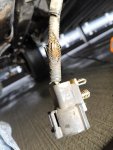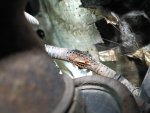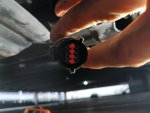Curious Hound
I know a guy with a website
TRS Forum Moderator
TRS Event Staff
⭐Supporting Member
💻 TRS Socials
Article Contributor
TRS Event Participant
TRS 20th Anniversary
TRS 25th Anniversary
VAGABOND
U.S. Military - Veteran
GMRS Radio License
- Joined
- Feb 7, 2016
- Messages
- 18,792
- Points
- 601
- Age
- 61
- City
- Wellford, SC
- State - Country
- SC - USA
- Other
- 2002 F250, 2022 KLR 650
- Vehicle Year
- 1993
- Vehicle
- Ford Ranger
- Drive
- 4WD
- Engine
- 3.0 V6
- Transmission
- Manual
- Total Lift
- 6"
- Tire Size
- 35"
- My credo
- In theory, theory and practice are the same. In practice, they are different.
That is correct.
Once the circuit is supplied by a fuse, it rarely ever goes through another fuse in automotive circuits.
There is no reason for a relay since the reverse lights are the only load on that part of the circuit and they dont draw much current. So, basically, the flow of power is this;
Fuse at SJB >> DTRC>> reverse lights >> ground
Sometimes a fuse will power several similar circuits. Don't let that throw you off track. And, yes, the circuit will go through multiple connectors and splices. This is necessary to make it possible to install the wiring through the firewall, frame, other tight spots at the factory.
Once the circuit is supplied by a fuse, it rarely ever goes through another fuse in automotive circuits.
There is no reason for a relay since the reverse lights are the only load on that part of the circuit and they dont draw much current. So, basically, the flow of power is this;
Fuse at SJB >> DTRC>> reverse lights >> ground
Sometimes a fuse will power several similar circuits. Don't let that throw you off track. And, yes, the circuit will go through multiple connectors and splices. This is necessary to make it possible to install the wiring through the firewall, frame, other tight spots at the factory.















